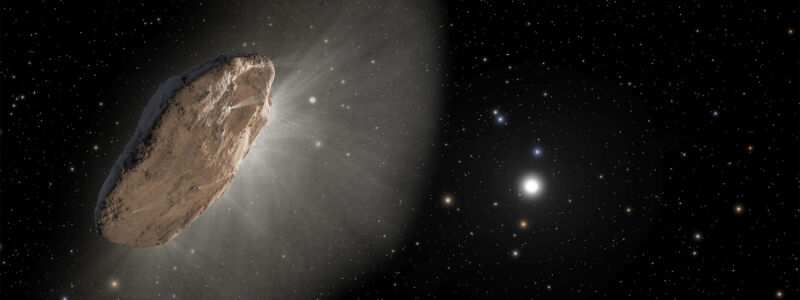Why interstellar objects like ‘Oumuamua and Borisov may hold clues to exoplanets

Enlarge / The first interstellar interloper detected passing through the Solar System, 1l/Oumuamua, came within 24 million miles of the Sun in 2017. It's difficult to know exactly what Oumuamua looked like, but it was probably oddly shaped and elongated, as depicted in this illustration. (credit: NASA, ESA, JOSEPH OLMSTED (STSCI), FRANK SUMMERS (STSCI))
On October 17 and 18, 2017, an unusual object sped across the field of view of a large telescope perched near the summit of a volcano on the Hawaiian island of Maui. The Pan-STARRS1 telescope was designed to survey the sky for transient events, like asteroid or comet flybys. But this was different: The object was not gravitationally bound to the Sun or to any other celestial body. It had arrived from somewhere else.
The mysterious object was the first visitor from interstellar space observed passing through the Solar System. Astronomers named it 1I/Oumuamua, borrowing a Hawaiian word that roughly translates to messenger from afar arriving first." Two years later, in August 2019, amateur astronomer Gennadiy Borisov discovered the only other known interstellar interloper, now called 2I/Borisov, using a self-built telescope at the MARGO observatory in Nauchnij, Crimea.
While typical asteroids and comets in the Solar System orbit the Sun, Oumuamua and Borisov are celestial nomads, spending most of their time wandering interstellar space. The existence of such interlopers in the Solar System had been hypothesized, but scientists expected them to be rare. I never thought we would see one," says astrophysicist Susanne Pfalzner of the Julich Supercomputing Center in Germany. At least not in her lifetime.